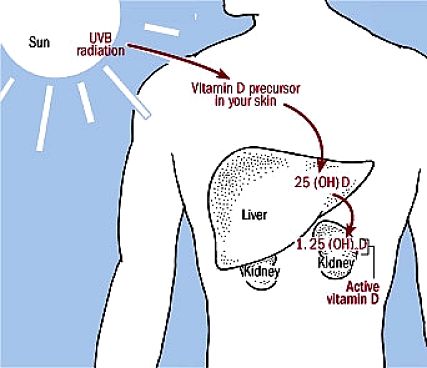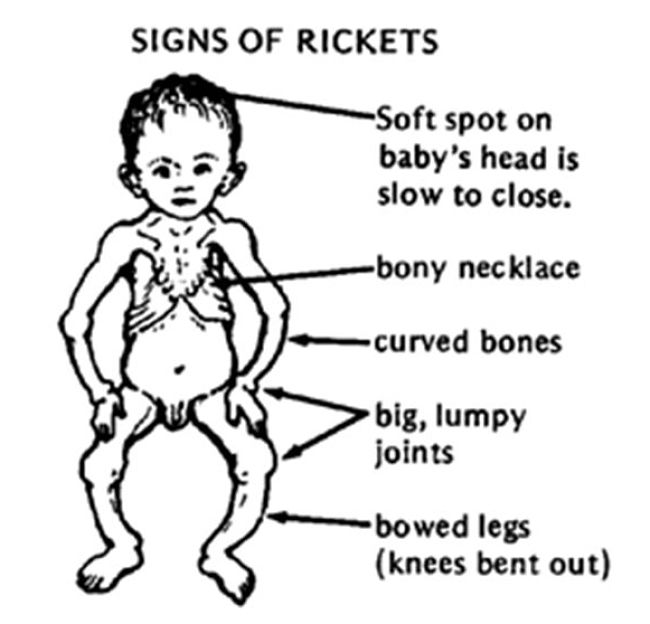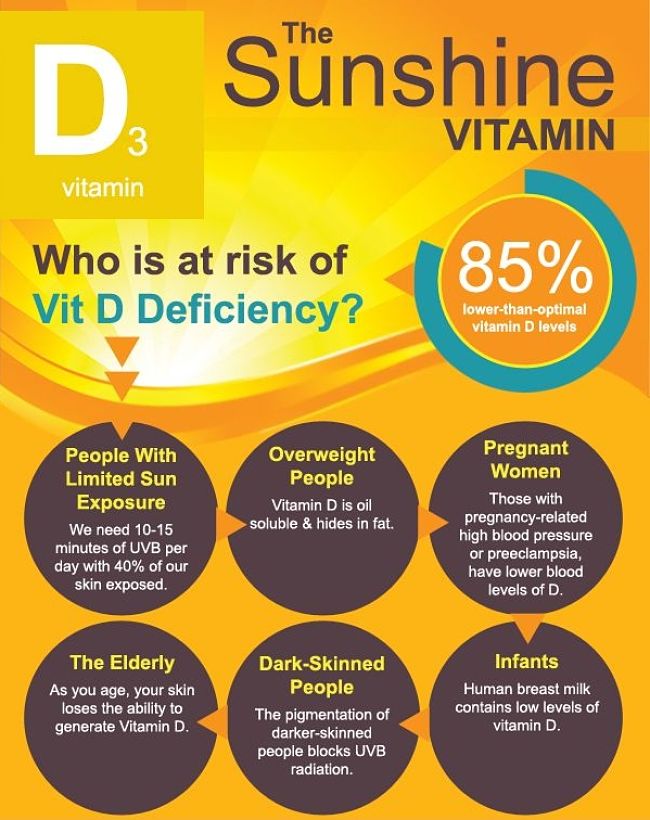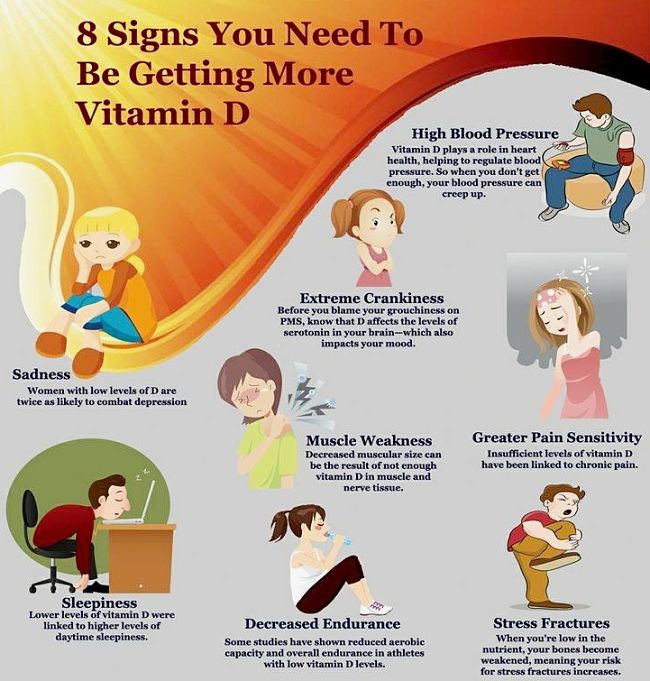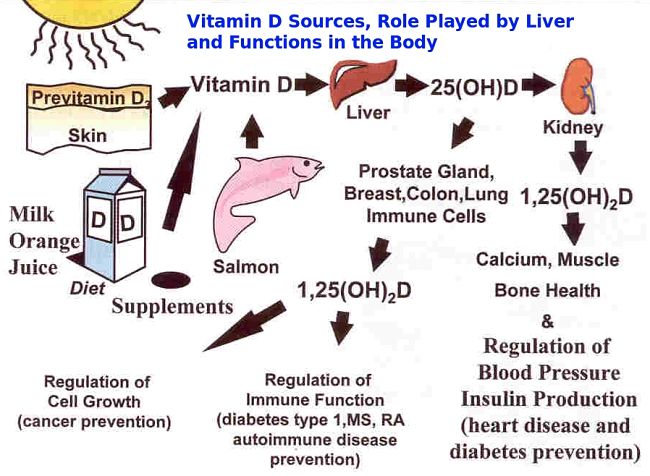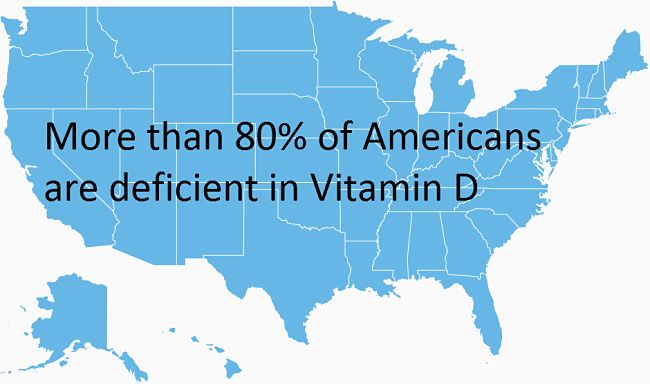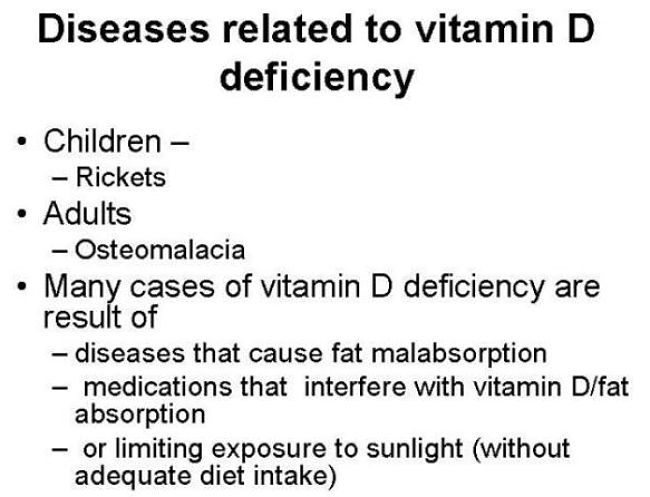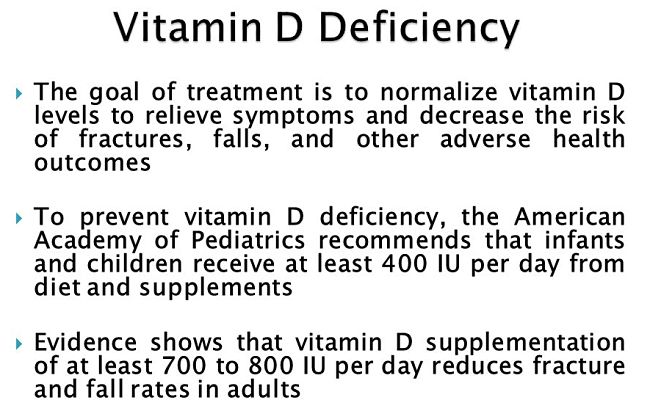Vitamin D Deficiency - Health Problems, Symptoms, Treatments
Vitamin D stands for Vitamin Dilemma because Vitamin D deficiencies have been implicated in a wide range of health problems and yet the body itself can produce this essential nutrient when exposed to sunlight. Yet people are told to keep out of the sun and sunscreens block the UV light that stimulates the production of vitamin D.
The natural high levels of melanin in the skin of Black people acts as a natural sunblock. This means that blacks living in the United States and in many European countries, where sun is less intense than in Africa, have less production of the previtamin due to sunlight exposure.
The general advice is that sun-baking and exposure to the sun can cause skin cancer. So people are staying out of the sun and not eating the small number of foods that are good sources of vitamin D and ending up with Vitamin D deficiencies.
Many studies in recent years have linked low levels of vitamin D to a growing number of health risks including heart disease, fragile bones, Rickets in children, high blood pressure, cancer, rheumatoid arthritis and mental development during pregnancy.
There is some evidence that exclusive breast-feeding may inadvertently lead to Vitamin D deficiency because the babies miss out on the Vitamin D supplements added to baby formulas and milk products, unless they are given other supplements.
This article discusses some of the health problems and risks, and looks for solutions to the Vitamin D dilemma.

What is Vitamin D
Vitamin D is a fat-soluble vital nutrient that is produced naturally the layers of the skin. Ultraviolet B radiation from sunlight that is absorbed into the tissues of the stimulates previtamin D to be produced through a natural process. This is transformed into the biologically active form of vitamin D in the kidneys.
Doctors around the world are reporting increasing numbers of enquiries, usually by woman over 50, about vitamin D deficiencies and bone health. Tests are showing low levels of Vitamin D in the blood. If vitamin D levels are deficient, the body's absorption of calcium is impaired, and bones become more fragile and prone to fractures. Recent research showed that of the 889 adult patients treated for bone fractures in Missouri, about 75% had blood levels of vitamin D classed as "insufficient" and 40% had levels classed as “deficient” . None of the subjects in this study had any known risk factors for vitamin D deficiency.
A second report, from South Korea, showed that vitamin D levels were significantly lower for about 100 post-menopausal women who had broken their wrists, than for about 100 age-matched controls.
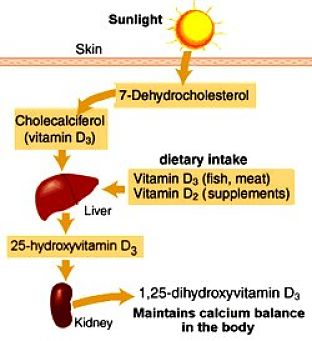
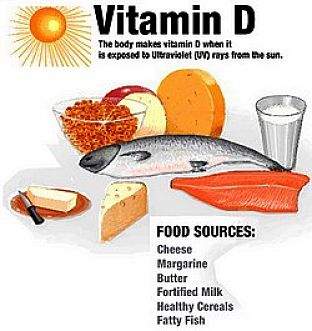
Vitamin D has Many Vital Roles and Functions in the Body
Virtually every tissue in the body has receptors for vitamin D, including intestines, brain, heart, skin, lymphocytes, sex organs, breasts and the placenta. Research studies have shown a link between vitamin D deficiencies of many health problems. These association studies suggest, without establishing a cause and effect relationship, that vitamin D deficiencies cause or contribute to many problems and diseases. These problems include colorectal cancer, bone health, high blood pressure, kidney disease and heart disease. These diseases are more prevalent in black Americans and blacks living in the Northern Hemisphere in the UK and Europe that are known to have higher rates of vitamin D deficiencies. There is also some preliminary evidence that vitamin D deficiency plays a role in Type 2 diabetes, asthma, pre-eclampsia and low birth weight or children, autoimmune diseases like multiple sclerosis and rheumatoid arthritis, and several brain-function disorders like depression, autism and memory loss.
Vitamin D deficiency during pregnancy has also been linked to impaired speech development in children. See: Vitamin D Deficiency in Mothers Linked to Childhood Speech Problems
It has also been linked to the resurgence of the childhood disease of rickets in US and other western countries. The sudden increase in the incidence of in rickets in Southampton UK astounded local doctors. Studies showed that more than 20% of children tested for bone problems in Southampton showed signs of rickets, which was prevalent in 17th Century England. Rickets can cause various bone deformities, such s bowed legs as well stunted bone growth in children.
Concerning Finding of British Study on the Rising Incidence of Rickets in Children
The condition, nutritional rickets, usually results from a dietary deficiency of vitamin D. This impairs the body's ability to absorb calcium from the diet, resulting in poor bone development. If rickets occurs in infancy or early childhood, the weak bones can become severely deformed, occasionally resulting in the need for major surgery.
Most individuals produce their own vitamin D when their skin is exposed to sunlight. Other sources of vitamin D include foods to which the vitamin is added in processing, such as milk, and most vitamin preparations. At the beginning of the 20th century, nutritional rickets was a common disease, particularly among infants in urban areas of the United States. With the advent of routine vitamin D supplements, however, the problem virtually disappeared by mid-century.
Prof Clarke, based at Southampton General Hospital, said vitamin D supplements should be more widely adopted to halt the rise in cases. A lack of vitamin D can be caused by poor diets and insufficient exposure to sunlight, which helps the body synthesise the vitamin. "A lot of the children we have seen have got low vitamin D and require treatment," he said.
In my 22 years at Southampton General Hospital, this is a completely new occurrence in the south that has evolved over the last 12 to 24 months and we are seeing cases across the board, from areas of deprivation up to the middle classes. Prof Nicholas Clarke Prof Clarke said vitamin D supplements should be more widely adopted to halt the rise in cases. "There is a real need to get national attention focused on the dangers this presents."
'He added that the "modern lifestyle, which involves a lack of exposure to sunlight, but also covering up in sunshine" had contributed to the problem. "The return of rickets in northern parts of the UK came as a surprise, despite the colder climate and lower levels of sunshine in the north, but what has developed in Southampton is quite astonishing," said Prof Clarke.
"We are facing the daunting prospect of an area like Southampton, where it is high income, middle class and leafy in its surroundings, seeing increasing numbers of children with rickets, which would have been inconceivable only a year or so ago."
Several articles published in the Journal of Pediatrics highlight an emerging incidence of rickets in the US, perhaps linked to an increase in breast-feeding in infants who miss out on the supplemental vitamins added to formulas, milk and other diary products.
A study in North Carolina, of 30 children diagnosed with rickets, were all African-American and breast-fed children who received no supplemental vitamin D (which is present in milk formulas). The researchers suggested that the lack of vitamin D in the diet and their dark skin, may have predisposed these infants to rickets. The rise in the incidence of rickets in the general population as well has lead to the researchers calling for all infants to get Vitamin D supplements.
Another dilemma for the Vitamin D problem is that very few natural foods and ingredients contain good levels of vitamin D. Such foods are not common in most foods as the best sources are fatty cold-water fish like salmon, and salt water species such as sardines, bluefish, anchovies, tuna and mackerel, as well as cod liver oil.
Some foods are fortified with the vitamin D, especially infant formula, milk and, more recently, some brands of yogurt, cheese, orange juice and breakfast cereal.
But there is no screening of vulnerable groups to ensure enough vitamin D is being provided in diets, especially as many weight conscious people have moved away from dairy products and fatty foods.
Another risk factor is skin color and the fact that many people or all colors spend less time in the sun, and when they do they wear sunscreens.
Dark skin evolved in equatorial Africa, where the sun is intense year round and just a brief daily exposure to UVB (the sun's burning rays) is sufficient to achieve adequate blood levels of vitamin D. But melanin in the skin acts as a natural sunblock, and among blacks living in the United States, where sun is less intense, less of the previtamin is produced.
Research studies based on thousands of adult participants in the National Health and Nutrition Examination Survey conducted from 2001 to 2006, revealed much higher rates of vitamin D deficiency among non-Hispanic blacks than non-Hispanic whites. Furthermore, in separate studies, lower levels of vitamin D among blacks across the
country were associated with a greater incidence of colorectal cancer, high blood pressure, protein in urine (a precursor of kidney disease) and cardiovascular deaths.
Avoiding Vitamin D Deficiency - The Multiple Dilemmas
- Warnings about the cosmetic and health risks of sun exposure and skin cancer have prompted many people to protect themselves from UVB rays with sunscreens and with protective clothing. Sunscreens have been shown to reduce the natural previtamin D production in the skin by more than 90 percent.
- Because vitamin D is stored in body fat, and people are getting fatter and obese this may lower levels of vitamin D in their blood. The vitamin D stored in the boy may be less accessible.
- The decline in the consumption of milk has meant that fewer people are getting the benefits of Vitamin D supplements in dairy products and breakfast cereals.
- Most of the vitamin D rich foods (see the table below) are not common items in the diets of most people.
- Because of this many people in the population are at risk of having blood serum levels less that the 20 - 30 nanograms per milliliter that are deemed to be needed to maintain good health.
Because of the growing concern about a possible epidemic of health problems cause by vitamin D deficiency many doctors and researchers have
called for widespread screening of serum levels of Vitamin D and government action to remedy the problem. This screenings should be particularly
applied to groups with greater risk for a deficiency such as: dark skinned people, older people, obese children and adults,
and pregnant or nursing women.
Charts of Recommended Daily Allowances and Foods which are a good source of Vitamin D are shown below:
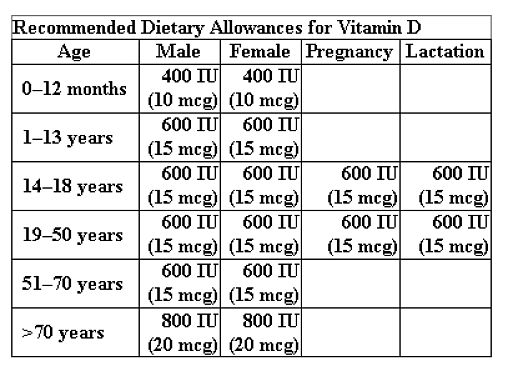
Chart of Foods Rich in Vitamin D (Listed by amount - see serving size)
|
Food
|
Serving
|
Internat. Units per serve
|
Food
|
Serving
|
Internat. Units per serve
|
|---|---|---|---|---|---|
|
Fish oil, cod liver
|
100 g
|
10000
|
Fast foods, egg, scrambled
|
100 g
|
68
|
|
Mushrooms, shiitake, dried
|
100 g
|
1660
|
OSCAR MAYER, Salami (hard)
|
100 g
|
62
|
|
Fish, herring, Atlantic, raw
|
100 g
|
1628
|
Margarine, fortified
|
1 tablespoon
|
60
|
|
Cod liver oil
|
1 tablespoon
|
1360
|
Fish, flatfish (flounder and sole species), raw
|
100 g
|
60
|
|
Tuna, bluefin, cooked
|
100 g
|
920
|
Tuna, canned, light or white
|
100 g
|
59
|
|
Salmon, sockeye, canned
|
100 g
|
780
|
Bologna, pork
|
100 g
|
56
|
|
Fish, salmon, sockeye, canned, drained solids with bone
|
100 g
|
763
|
Butter, salted
|
100 g
|
56
|
|
Fish, herring, Atlantic, pickled
|
100 g
|
680
|
Milk, lowfat, fluid, 1% milkfat, with added vitamin A
|
100 g
|
52
|
|
Fish, salmon, pink, canned, solids with bone and liquid
|
100 g
|
624
|
Cream, fluid, heavy whipping
|
100 g
|
52
|
|
Fish, halibut, Greenland, raw
|
100 g
|
600
|
Pork sausage, fresh, raw
|
100 g
|
52
|
|
Salmon, pink, canned
|
100 g
|
580
|
Fortified margarine
|
2 teaspoons
|
51
|
|
Swordfish, cooked
|
3 oz
|
566
|
Oscar Mayer, Liver Cheese, pork fat wrapped
|
100 g
|
49
|
|
Tuna, skipjack, cooked
|
100 g
|
508
|
Soy milk, fluid, calcm fortified
|
100 g
|
49
|
|
Fish, catfish, channel, wild, raw
|
100 g
|
500
|
Pickle and pimiento loaf, pork
|
100 g
|
48
|
|
Sardines, Pacific, canned
|
100 g
|
480
|
Braunschweiger (a liver sausage), pork
|
100 g
|
48
|
|
Fish, sardine, Pacific, canned in tomato sauce, drained solids with bone
|
100 g
|
480
|
Picnic loaf, pork, beef
|
100 g
|
48
|
|
Fish, salmon, pink, canned, drained solids with bone
|
100 g
|
466
|
Salami, cooked, beef
|
100 g
|
48
|
|
Salmon (sockeye), cooked
|
3 oz
|
447
|
Sardines, canned in oil, drained, 2 sardines
|
2 sardines
|
46
|
|
Milk, dry, nonfat, instant, with added vitamin A
|
100 g
|
440
|
Ham and cheese loaf or roll
|
100 g
|
44
|
|
Fish, mackerel, Atlantic, raw
|
100 g
|
360
|
Sausage, Polish, pork and beef, smoked
|
100 g
|
44
|
|
Cereals, QUAKER, Instant Oatmeal
|
100 g
|
342
|
Sausage, smoked link sausage, pork and beef
|
100 g
|
44
|
|
Fish oil, sardine
|
100 g
|
332
|
Cheese, swiss
|
100 g
|
44
|
|
Milk, dry, nonfat, regular, without added vitamin A
|
100 g
|
332
|
Thuringer, cervelat, summer sausage, beef, pork
|
100 g
|
44
|
|
Salmon, Atlantic, cooked
|
100 g
|
328
|
Fish, cod, Atlantic, raw
|
100 g
|
44
|
|
Mollusks, oyster, eastern, wild, raw
|
100 g
|
320
|
Ice creams, vanilla, rich
|
100 g
|
44
|
|
Infant formula, ROSS, SIMILAC, low iron, powder, not reconstituted
|
100 g
|
316
|
Milk, reduced fat, fluid, 2% milkfat, with added vitamin A
|
100 g
|
43
|
|
Milk, dry, whole
|
100 g
|
312
|
Liver, beef, cooked
|
3 oz
|
42
|
|
Infant formula, MEAD JOHNSON, ENFAMIL, low iron, powder, not reconstituted
|
100 g
|
310
|
Egg, 1 large (vitamin D is found in yolk)
|
1 large
|
41
|
|
Mushrooms, shiitake, cooked, with salt
|
100 g
|
303
|
Shake, fast food, vanilla
|
100 g
|
41
|
|
Infant formula, WYETH-AYERST, store brand soy, with iron, powder, not reconstituted
|
100 g
|
303
|
Milk, nonfat, fluid, with added vitamin A (fat free or skim)
|
100 g
|
41
|
|
Cereals ready-to-eat, MALT-O-MEAL, Corn Flakes
|
100 g
|
296
|
Ready-to-eat cereal, fortified with 10% of the DV for vitamin D
|
1 cup
|
40
|
|
Infant formula, MEAD JOHNSON, LOFENALAC, with iron, powder, not reconstituted
|
100 g
|
290
|
Fast foods, english muffin, with egg, cheese, and canadian bacon
|
100 g
|
32
|
|
Trout, cooked
|
100 g
|
280
|
Egg, whole, cooked, omelette
|
100 g
|
29
|
|
Fish, sardine, Atlantic, canned in oil, drained solids with bone
|
100 g
|
272
|
Cheese, parmesan, hard
|
100 g
|
28
|
|
Fish, mackerel, jack, canned, drained solids
|
100 g
|
252
|
Ice creams, vanilla, light
|
100 g
|
26
|
|
Infant formula, MEAD JOHNSON, ENFAMIL, NUTRAMIGEN, with iron, powder, not reconstituted
|
100 g
|
250
|
Egg yolk
|
1 yolk
|
25
|
|
Cereals ready-to-eat, MALT-O-MEAL, High Fiber Bran Flakes
|
100 g
|
248
|
Spinach souffle
|
100 g
|
25
|
|
Fish, tuna, light, canned in oil, drained solids
|
100 g
|
236
|
Salami, cooked, turkey
|
100 g
|
24
|
|
Fish, caviar, black and red, granular
|
100 g
|
232
|
Fast foods, fish sandwich, with tartar sauce and cheese
|
100 g
|
20
|
|
Cereals ready-to-eat, MALT-O-MEAL, Chocolate Flavored Crisp Rice Cereal
|
100 g
|
230
|
Sandwiches and burgers, hamburger, large, single meat patty, plain
|
100 g
|
16
|
|
Salmon, chum, canned
|
100 g
|
224
|
Candies, fudge, vanilla, prepared-from-recipe
|
100 g
|
16
|
|
Fish, salmon, chum, drained solids with bone
|
100 g
|
224
|
Fast foods, hamburger, regular, double patty, plain
|
100 g
|
16
|
|
Herring, cooked
|
100 g
|
216
|
Candies, fudge, chocolate, prepared-from-recipe
|
100 g
|
16
|
|
Cereals ready-to-eat, KELLOGG, KELLOGG'S ALL-BRAN WITH EXTRA FIBER
|
100 g
|
210
|
Soy milk, fluid
|
100 g
|
16
|
|
Cereals ready-to-eat, KELLOGG'S, FRUIT HARVEST Strawberry/Blueberry
|
100 g
|
205
|
Bread, egg
|
100 g
|
16
|
|
Cereals ready-to-eat, KELLOGG'S, FROSTED FLAKES 1/3 Less Sugar
|
100 g
|
202
|
Candies, fudge, vanilla with nuts
|
100 g
|
14
|
|
Cereals ready-to-eat, GENERAL MILLS, GENERAL MILLS Berry Burst CHEERIOS, all flavors
|
100 g
|
200
|
Candies, fudge, chocolate, with nuts, prepared-from-recipe
|
100 g
|
14
|
|
Egg, whole, dried
|
100 g
|
188
|
Sausage, Berliner, pork, beef
|
100 g
|
13
|
|
Cereals ready-to-eat, KELLOGG'S, CORN FLAKES With Real Bananas
|
100 g
|
175
|
Potatoes, mashed, dehydrated, prepared from flakes without milk, whole milk and butter added
|
100 g
|
12
|
|
Tuna fish, canned in water, drained, 3 ounces
|
3 oz
|
154
|
Sandwiches and burgers, cheeseburger, large, single meat patty, plain
|
100 g
|
12
|
|
Cereals ready-to-eat, KELLOGG, KELLOGG'S Corn Flakes
|
100 g
|
152
|
Sausage, summer, pork and beef, sticks, with cheddar cheese
|
100 g
|
12
|
|
Crustaceans, shrimp, mixed species, raw
|
100 g
|
152
|
Sausage, pork and beef, with cheddar cheese, smoked
|
100 g
|
12
|
|
Cereals ready-to-eat, wheat, puffed, presweetened, single brand
|
100 g
|
148
|
Fast foods, hamburger, regular, single patty, plain
|
100 g
|
12
|
|
Tuna, yellowfin (albacore, ahi), cooked
|
100 g
|
140
|
Sandwiches and burgers, cheeseburger, regular, single meat patty, plain
|
100 g
|
12
|
|
Orange juice fortified with vitamin D (amount varies)
|
1 cup
|
137
|
Fast foods, sundae, strawberry
|
100 g
|
12
|
|
Cereals ready-to-eat, GENERAL MILLS, Multi-Grain Cheerios
|
100 g
|
126
|
Fast foods, sundae, hot fudge
|
100 g
|
12
|
|
Cereals ready-to-eat, oats, corn puffed mixture, presweetened, single brand
|
100 g
|
125
|
Milk, goat, fluid
|
100 g
|
12
|
|
Cereals ready-to-eat, KELLOGG, KELLOGG'S FROOT LOOPS
|
100 g
|
125
|
Cheese, cheddar
|
100 g
|
12
|
|
Milk, nonfat, reduced fat, and whole, vitamin D-fortified
|
1 cup
|
120
|
Cheese, camembert
|
100 g
|
12
|
|
Fish, herring, Atlantic, kippered
|
100 g
|
120
|
Fast foods, sundae, caramel
|
100 g
|
8
|
|
Mackerel, cooked
|
100 g
|
108
|
Potatoes, mashed, home-prepared, whole milk and butter added
|
100 g
|
8
|
|
Fortified orange juice
|
1 cup
|
106
|
Fast foods, ice milk, vanilla, soft-serve, with cone
|
100 g
|
8
|
|
Sardines, Atlantic, canned
|
100 g
|
93
|
Shake, fast food, strawberry
|
100 g
|
8
|
|
Mushrooms, canned, drained solids
|
100 g
|
90
|
TACO BELL, BURRITO SUPREME with beef
|
100 g
|
7
|
|
Fortified rice or soy beverage
|
1 cup
|
88
|
Fish, fish portions and sticks, frozen, preheated
|
100 g
|
7
|
|
Cereals ready-to-eat, KELLOGG'S, SMART START Soy Protein
|
100 g
|
85
|
Cheese, Swiss, 1 ounce
|
1 oz
|
6
|
|
Fish, cod, Atlantic, canned, solids and liquid
|
100 g
|
84
|
Potatoes, mashed, home-prepared, whole milk added
|
100 g
|
6
|
|
Cereals ready-to-eat, KELLOGG, KELLOGG'S JUST RIGHT Fruit & Nut
|
100 g
|
83
|
Potatoes, mashed, home-prepared, whole milk and margarine added
|
100 g
|
6
|
|
Yogurt, fortified with 20% of the DV for vitamin D
|
6 oz
|
80
|
Mollusks, clam, mixed species, raw
|
100 g
|
4
|
|
Milk, canned, evaporated, nonfat
|
100 g
|
80
|
Milk, human, mature, fluid
|
100 g
|
4
|
|
Infant formula, MEAD JOHNSON, ENFAMIL, low iron, liquid concentrate, not reconstituted
|
100 g
|
78
|
Snacks, corn-based, extruded, puffs or twists, cheese-flavor
|
100 g
|
2
|
Related Articles
=> Q&A: Vitamin D Deficiency Rate Rising - Call for Adding Vitamin D to Food
=> Winter Allergies - Triggers, Symptoms, Causes, Remedies and Prevention Tips
=> Bright Light Therapy for Seasonal Affective Disorder, Winter Depression, Cabin Fever
=> Best Healthy Vegetable Chart - Calories, Fiber, Vitamins, Minerals
=> Do Your Really Need Vitamin and Mineral Dietary Supplements?
=> What Fruit is Healthiest For Calories, Fiber, Fat, Vitamins, Minerals
=> Avocado Nutrition Facts - Calories, Fat, Protein, Vitamins, Minerals
=> Q&A: Vitamin D Deficiency Rate Rising - Call for Adding Vitamin D to Food
=> Health Benefits Chlorella - Vitamins, Protein, Minerals, Nutrients
